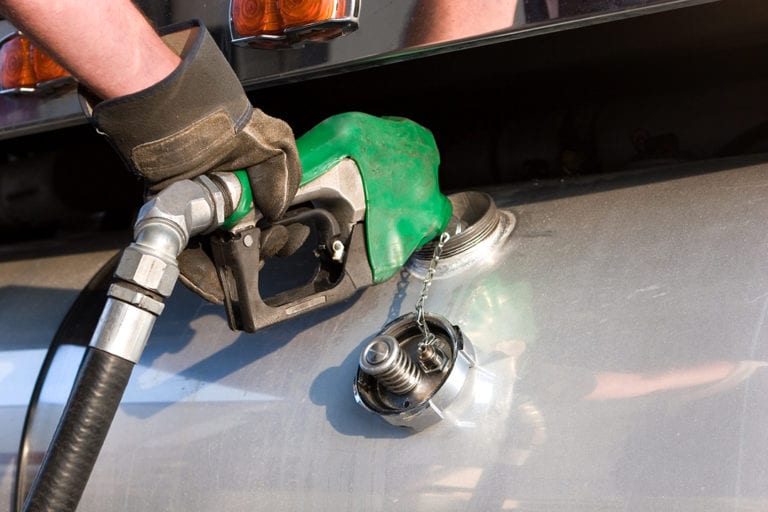HYGIENE: BEYOND HAND-WASHING
As a truck driver, you may do everything within your ability to protect yourself from germs. Most likely you follow the time-proven recommendations to avoid illnesses of many types — hand-washing, using sanitizer, avoiding people showing symptoms of illness, and when possible, staying home from work are typical steps of your daily routine.
But you need to protect more than your body from risks. Keeping your home and your workplace as germ-free as possible is just as important. When driving a truck, these two locations often overlap. For days, weeks or months at a time, your truck may also be your “home.” If you want to do everything you can to lower your risk of contracting any disease-causing germs, whether the coronavirus, the flu, or the common cold, you cannot ignore your truck.
Trucks, like anything else, carry enormous populations of germs. You can think of your truck as a “melting pot.” where many varieties of germs try to live together; and some battle for supremacy. Always remember: Germs live for one reason — to reproduce with the goal of covering every habitable surface on the planet. For drivers who traveled along Interstate 40 in western Tennessee 20 or 30 years ago, think of the Virginia Creeper vines, which were planted on the roadsides for highway beautification, as giant-sized germs. In short order, the invasive plant covered every rock and tree it could reach. The result was an enormous number of dead trees — and an equally enormous amount of money spent to eradicate something that had intentionally been planted.
Germs spread the same way, but much faster.
No matter how hard you try, the typical steps you take to clean and disinfect your truck will not eliminate every disease-causing germ from either the interior or exterior. Even if you fumigate your truck, by the time you drive out of the parking area, tens of millions of germs will have already attached themselves to exterior surfaces. They won’t waste time joining you in your truck’s cab.
People deal with germs every day, both viral and bacterial; there is no way to completely avoid them. Even if you self-isolate, you can be guaranteed you’ll be surrounded by hundreds of millions of germs. It’s simply a matter of life. Germs outnumber the population of Earth by a factor too large to calculate. Accepting that some germs are advantageous won’t reduce your anxiety, especially when you are met at every turn with information about a new illness such as the coronavirus. However, since the coronavirus protection measures for now, identical to those followed to protect against common illnesses, let’s look at your truck and germs from, say, the 12-foot level.
A Hygienic Truck
Keeping a truck clean and completely germ-free is an impossible task. Don’t waste your time trying. But that’s not to say you can’t do a better job and expend a little more effort than usual when germs such as the coronavirus are at the forefront of everyone’s minds. Take a few minutes to consider what about your truck and your daily routine makes it a paradise for tremendous germ populations.
In a recent press release, EZFill, a South Florida company that provides mobile fuel delivery, shared some surprising research findings. Based on a Kimberly-Clark study endorsed by an independent research firm, the filthiest, germ-laden item a truck driver contacts on a regular basis is a fuel pump. In fact, the study showed that a fuel-pump handle is covered with 11,000 times as many germs as a public toilet seat. And as far as the touch-buttons on a fuel pump are concerned, the numbers are even more harrowing. When touching a button to select a fuel type or quality or entering information using a fuel pump keypad, a driver is exposed to 15,000 times as many germs found on a public toilet seat. In either event, that’s a lot of germs to worry about. But you don’t necessarily need to worry.
You can reduce your exposure the germs while fueling your truck by taking the simple step of wearing medical gloves. You can purchase them in any pharmacy, and a single box will last months. If gloves aren’t available, finish fueling and head directly to a hand-sanitizing station or use sanitizer stored in your truck. Of course, no matter how cautious you are when fueling, you’ll likely still carry some of the germs into your truck, and they’ll likely set up shop on your steering wheel — the part of your truck where more than 70 million germs daily organize and create their battle plans.
In addition to fuel pumps and your steering wheel, consider other equipment you frequently touch with your hands or other parts of your body.
Take your CB radio as an example. Not only do you pick up the mic with your hand and press a button that likely opens a housing, allowing germs to pour inside by the millions, but you also speak and breathe directly into your mic. In some cases, the mic may even touch your mouth. If there is anything worse than touching a germ-infested surface, it is inhaling while holding that mic within millimeters of your mouth. You may think you are only inhaling your own germs, but germs are different than barnacles attaching to a ship’s hull. Germs like to travel, both OTR and in the cab of your truck. Moving from your dash to your CB unit and up the cord to your microphone is something germs do for enjoyment, not as exercise.
As noted earlier, even a run-of-the-mill germ lives for the sole purpose of reproducing so its population will someday cover every square inch of habitable surface on the face of the earth. The larger the population, the more powerful germs become. The overall lesson is that germs travel by land, air and sea. Even the water you use to clean your truck is home to untold numbers of germs. Check cleaning instructions for various surfaces and use the strongest allowable solutions. If it won’t damage your equipment, a water-bleach mixture is usually an effective and inexpensive choice.
Considering the inherent risks of touching or inhaling the germs that live on various surfaces in your truck, don’t forget the germs that any passengers bring aboard. You never know where your passengers’ hands have been, and you likely don’t want to find out. Instead, take the time to sanitize the passenger seat and any surface, such as the door handle and directional air vents, that passengers might touch while riding with you. Some carriers have recently told drivers, including owner-operators, that they can use company charge cards to purchase disinfectants, sanitizers and associated supplies. In any event, most of the items needed to maintain a healthy cab aren’t going to break the bank. Some steps, in fact, cost nothing.
The typical cold or flu virus usually runs its course in a week or 10 days, and while the conditions are seldom chronic, they do create discomfort, if not misery. Likewise, a severe case of the flu can easily knock a driver off the road for the duration of its cycle, creating financial concerns and stress to go along with the illness. Germs love stress. It weakens immune systems and increases the length of time germs can make you ill. If you have a particularly robust population of germs, you can suffer through recurring bouts of the same illness as the various viruses or bacteria cycle through their life spans at 500 RPM.
If you are an OTR driver, your truck is at least your temporary home. You carry enough germs inside without the need for help. Conduct business outside your truck, and avoid passengers who are coughing or sneezing. They may bring a whole new set of germs aboard.
To read Part 5, the final installment in this series, “Down and dirty: Killing the coronavirus and other germs,” click here.
Since retiring from a career as an outdoor recreation professional from the State of Arkansas, Kris Rutherford has worked as a freelance writer and, with his wife, owns and publishes a small Northeast Texas newspaper, The Roxton Progress. Kris has worked as a ghostwriter and editor and has authored seven books of his own. He became interested in the trucking industry as a child in the 1970s when his family traveled the interstates twice a year between their home in Maine and their native Texas. He has been a classic country music enthusiast since the age of nine when he developed a special interest in trucking songs.















I would like to see a company step up and offer sanitizing items for truckers as a priority. I am seeing it for hospital and government agencies but these people are out there making sure the US has good in the stores and yet, it is nearly impossible for them to get those same goods for themselves.